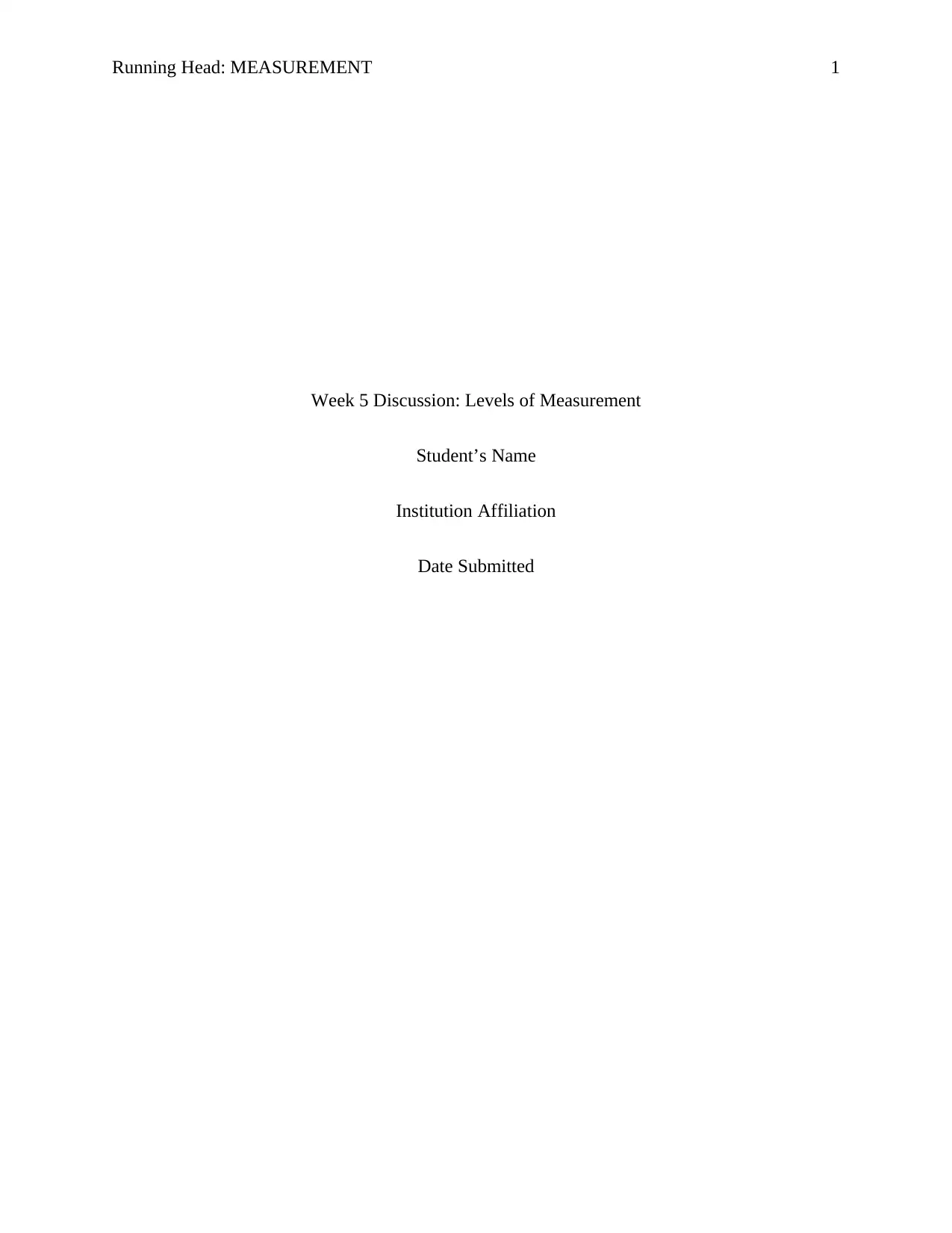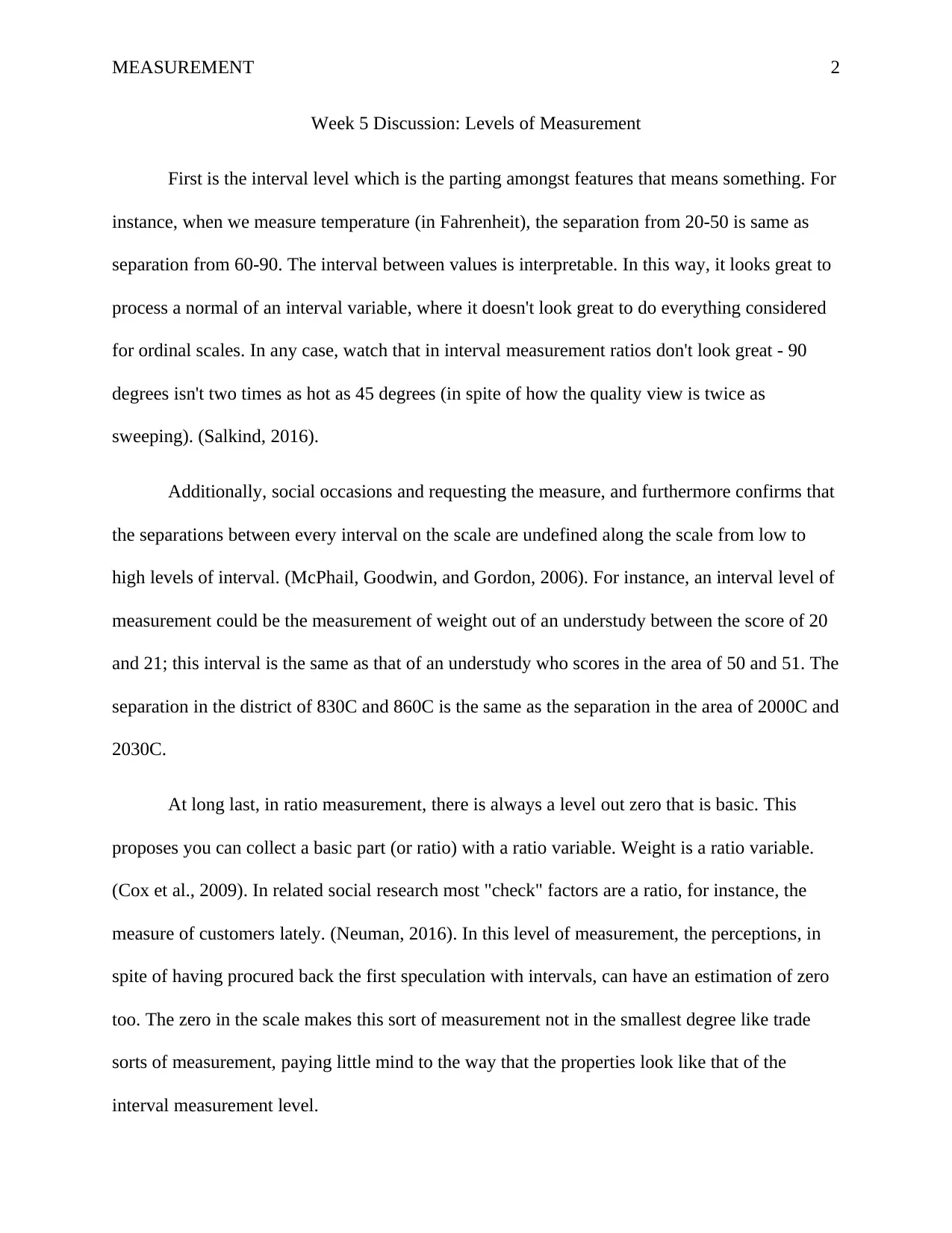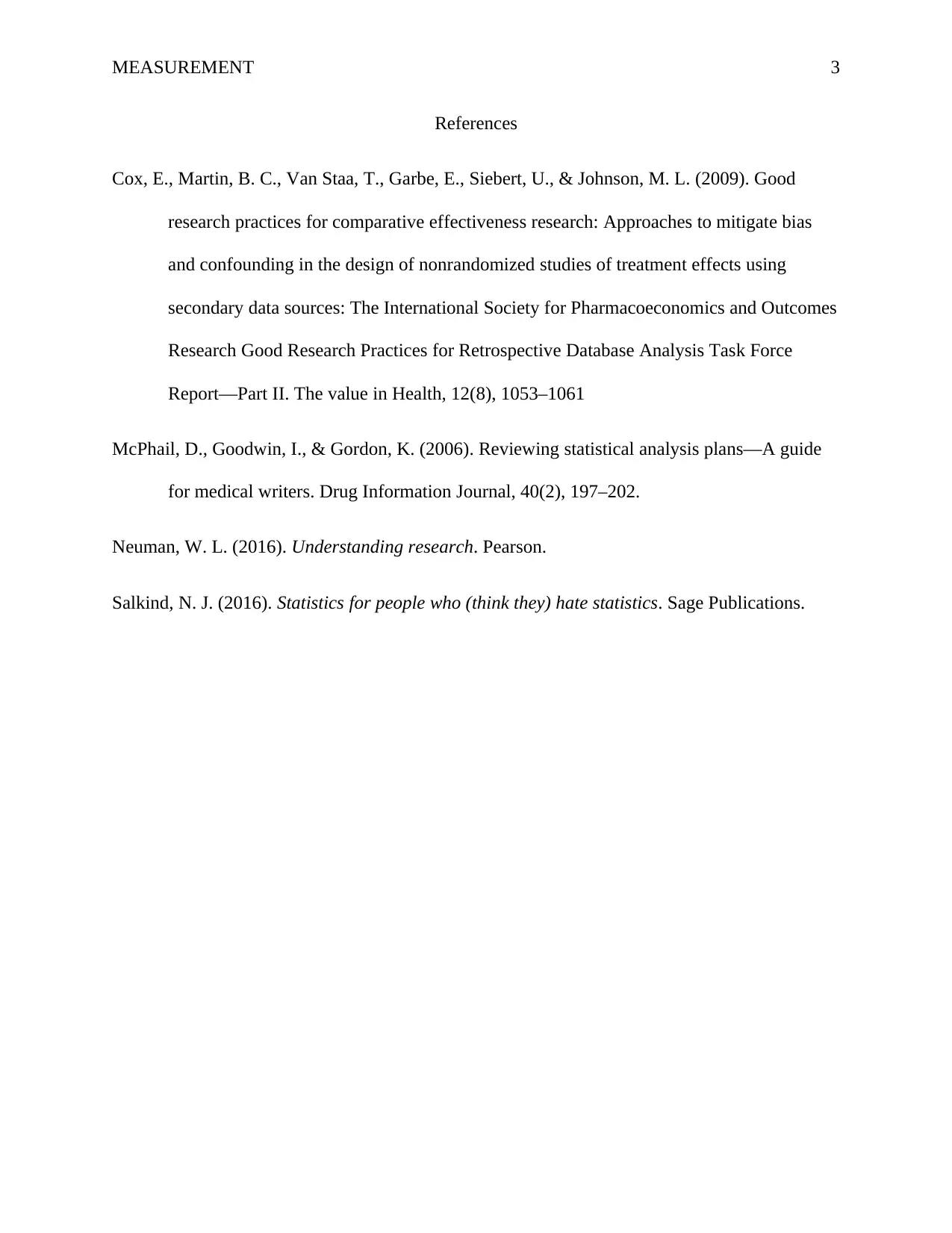Statistics Assignment: Week 5 Discussion on Levels of Measurement
VerifiedAdded on 2021/04/16
|3
|573
|26
Discussion Board Post
AI Summary
This discussion post explores the concept of levels of measurement in statistics, focusing on interval and ratio scales. It explains that the interval level of measurement involves interpretable intervals between values, such as temperature measured in Fahrenheit. It also mentions that in interval measurement, the separation between the values is the same along the scale. The post then discusses the ratio level of measurement, which includes an absolute zero point, allowing for ratio comparisons. It highlights that weight is a ratio variable and that many 'count' variables in social research are also ratio variables. The post references several sources to support the discussion, including works by Salkind, McPhail, Goodwin, and Gordon, Neuman, and Cox et al.
1 out of 3






![[object Object]](/_next/static/media/star-bottom.7253800d.svg)